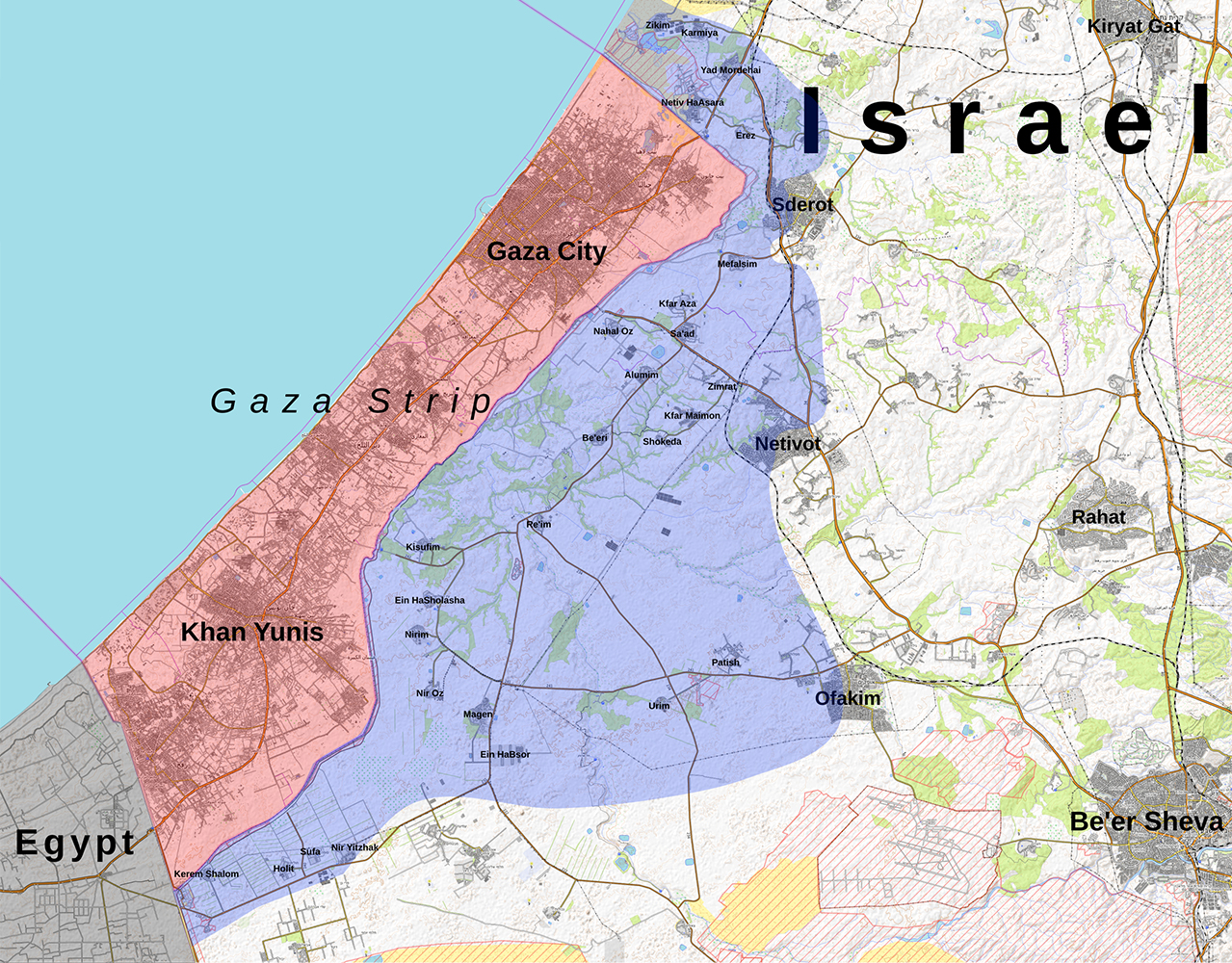As the anniversary of October 7th approaches this geopolity series looks at where things stand after 12 months. In this second part we look at what motivated factions from Gaza to unite, plan and execute a surprise assault and where this leaves the Palestinian liberation struggle.
It was necessary to “…change the entire equation and not just have a clash…” Khalil al-Hayya, a member of Hamas’s top leadership body, told The New York Times back in November 2023. “We succeeded in putting the Palestinian issue back on the table, and now no one in the region is experiencing calm.”[1] As we approach the anniversary of October 7, over 41,000 people have been killed with entire families wiped out. Israeli airstrikes have reduced Palestinian neighbourhoods to rubble. Women, children, mosques, churches, hospitals and refugee safe zones have not been spared with some bombed repeatedly. Zionists accuse Hamas of knowing Israel would respond when it launched its offensive on October 7. The repeated call by Zionists has been Hamas could end the conflict if it returns the hostages. When we look at the Palestinian struggle, things are not so black and white and after decades of occupation, their struggle was on the verge of being forgotten.
Whilst many see October 7 as the beginning of the conflict, the reality is this was never the case as the conflict and occupation is decades old, with October 7, just the latest act in a long and brutal persecution. Palestinians have been suffering since Britain declared its support for a Jewish homeland in the infamous Balfour Declaration in 1917 and the subsequent occupation of Jerusalem by the British General Allenby. Britain promised someone else’s land to European Jews and facilitated their settlement in Palestine during the British occupation from 1918-1948. When Israel was created in 1948 there were around one million indigenous Palestinians, up to 750,000 of these were either expelled or they fled as hundreds of towns and villages were depopulated and destroyed by Zionists.
Gaza became a refuge for Palestinians who were expelled from 1948 and it remained under Egyptian authority from 1948 until it was occupied by Israel in the 1967 war leading to the beginning of a decades long military occupation. In the 1990s the Oslo Accords established the Palestinian Authority (PA) as a limited governing authority over some territories including Gaza, initially led by Fatah until that party’s electoral defeat in 2006 to Hamas. Israel in 2005 evacuated its settlements within Gaza and redeployed its military along the border of Gaza. Ever since Israel has maintained brutal control of the strip by controlling access, the airspace, movement in and out, water, electricity and even the calories Gazans can have. Human Rights organisations have for long termed Gaza the world’s most densely populated open prison, with many considering it a concentration camp. Despite there being elections in Gaza and despite there being a government, in reality the government has never controlled the territory. Israel has always maintained control and Netanyahu arrogantly admitted on more than one occasion he supported Hamas in order to drive a wedge between the West Bank and Gaza.[2] Despite many of the claims made against the people of Gaza and Hamas the reality was neither Hamas or Gazans were in control of their own destiny.
Israel has maintained brutal control of the Gaza strip by controlling access, the airspace, movement in and out, water, electricity and even the calories Gazans can have
Why Attack Israel?
This was the context on the eve of October 7. The Arab regional nations were busy normalising relations with Israel in the region in the Abraham accords and despite the Israeli claim that the region was the most stable it had been for decades, the people of Gaza were living a real nightmare in what was in reality a concentration camp.
The 16-page report titled “Our Narrative” published on the 21st of January 2024 by Hamas’s political wing explained the occupation and expulsion of the Palestinians from 1948 as the driving factor for October 7th. The oppression, injustice, expropriation of their fundamental rights, the deaths of so many Palestinians, the Israeli violations and brutality, the US administration and its western allies treating Israel as a state above the law and Israel’s rejection of a Palestinian state were all stated as the reasons for carrying out the October 7 attack. The document explained that proceeding from the above, Operation Al-Aqsa Flood on October 7 was a necessary step and a normal response to confront all Israeli conspiracies against the Palestinian people and their cause. It was a defensive act in the frame of getting rid of the Israeli occupation, reclaiming the Palestinian rights and on the way for liberation and independence like all peoples around the world.
The Assault on Israel was first proposed in 2021. Preparation then began that involved examining Israeli Security Forces tactics and strategies, terrestrial analysis, weapons’ supply and training those members of Nukhba forces specifically selected for the operation. In an interview with the Associated Press published on the 9th October 2023, Ali Barakeh, a senior political leader of Hamas, claimed that the operation was planned by a small number of top Hamas military wing commanders in Gaza and that the Government and military of Iran and the Hezbollah, were not informed in advance about the timing.
The planning for the October 7 assault was two years in the making and was planned by a small cell of Hamas operatives, something Israeli intelligence uncovered after the attack, who also communicated via a network of hardwired phones built into the network of tunnels underneath Gaza.[3] The specific plans were disclosed only shortly before the operation to the other participants to maintain operational secrecy.
October 7 is the largest assault by a non-state actor in the history of the Palestinian occupation and conflict. Multiple groups were able to come together, put their differences aside and plan and train for a major asymmetric assault
Whilst Hamas is seen to have carried out the October 7 assault there were multiple groups involved. From the Abu Ali Mustafah Brigades to the Mujahedeen brigades and the Omar al-Qasim forces as well as Palestinian Islamic Jihad. In total 10 groups have since been identified that participated in the attack on October 7. The assault on Israeli military bases saw the various groups conduct drills in plain sight of Israel, who just refused to believe such an assault was possible as they believed it was beyond their capabilities. The groups practised storming buildings, taking hostages and destroying security barriers, which proved deadly on October 7.[4]

Operation Al-Aqsa Flood targeted Israeli military sites in the southern enclave and subsequent reports proved soldiers were targeted. The operation targeted the destruction of the Israeli army’s Gaza Division, the Israeli military sites stationed near the Israeli settlements around Gaza. The assault saw the groups reach 15 miles into Southern Israel with around 350 hostages taken back to the Gaza strip.
October 7 is the largest assault by a non-state actor in the history of the Palestinian occupation and conflict. Multiple groups were able to come together, put their differences aside and plan and train for a major asymmetric assault. They maintained secrecy and gained intelligence on their targets. In the execution of the assault, they were able to use the element of surprise and catch the enemy out by breaching out from Gaza from multiple points and this allowed them to descend upon multiple areas in Southern Israel. This caught Israel by surprise and placed her on the back foot for hours. What aided the assault greatly was the execution was all decentralised, despite there being central planning. Andreas Krieg, a senior lecturer in security studies at King’s College London, told the BBC: “While there was centralised planning, execution was de-centralised, with each squad operationalising the plan as they saw fit.”[5]
Many may see this assault as a suicide pact as there was no way the assault was going to succeed, and it was going to lead to a major Israeli reprisal. Hamas and many from Gaza have repeatedly outlined and explained that they were in a living hell due to Israel’s occupation, due to the abandonment by the regional leaders and western indifference. The attempts to turn to international law, international institutions, western nations and peaceful protests and negotiations have all fallen flat with nowhere for the Palestinians to turn to. This is why the Gaza groups were prepared to give their lives for this cause. The UN Secretary-General Antonio Guterres highlighted this back on the 24th of October 2023: “It is important to also recognise the attacks by Hamas did not happen in a vacuum…” and “The Palestinian people have been subjected to 56 years of suffocating occupation.”[6] In the end, once the IDF got its act together and mobilised its resources and brought them to bear the assault was doomed. The aim of the assault as stated by Hamas was focused on military targets and to occupy territory long enough to take hostages in order to use them to free Palestinians in Israeli prisons. This was not a traditional assault to conquer territory but to target the occupation military resources and take hostages. The element of surprise is what allowed the Gaza groups to achieve this. The element of surprise caught Israel off guard and led to the rapid collapse of the Israeli security and military system, and chaos along the border areas with Gaza. This was something the Gaza groups didn’t expect and therefore never prepared or planned for.
The aim of the assault as stated by Hamas was focused on military targets and to occupy territory long enough to take hostages in order to use them to free Palestinians in Israeli prisons
Hamas Endures
As we approach the anniversary of October 7, 12 months of Israeli air and ground combat assault has not defeated Hamas, nor is Israel close to vanquishing the group. To the contrary, according to many analysts, using the measures that matter, Hamas is stronger today than it was on October 7.
Israeli leaders have consistently claimed that the goal of defeating Hamas and weakening its ability to launch new attacks against Israeli civilians must take precedence over any concerns about Palestinian lives. The collective punishment of the population of Gaza must be accepted as necessary to destroy the power of Hamas. Just as the Viet Cong grew stronger during the huge “search and destroy” operations that ravaged much of South Vietnam in the 1960s when the US poured troops into the country in an ultimately futile bid to turn the war in its favour, Hamas remains intractable. It has evolved into a tenacious and deadly guerrilla force in Gaza—with lethal operations in the Northern Gaza region that was supposedly cleared by Israel.
Since Israel’s assault on Gaza, Hamas began a guerrilla war that has seen ambushes and improvised bombs that are often made from unexploded ordnance or captured IDF weapons. Hamas is still able to strike in Israel having used a portion of its resources on October 7. Most of Hamas’s top leadership in Gaza remains intact. Thanks to Israel’s assault, Hamas’s power is actually growing.
Differences have also emerged within Israel over how realistic it is to destroy Hamas. Gadi Eisenkot, a former head of the Israeli Defense Forces (IDF) whose son died fighting in Gaza in December 2023 suggested the goal of eradicating Hamas was unrealistic. “Whoever speaks of the absolute defeat [of Hamas in Gaza] and of it no longer having the will or the capability [to harm Israel], is not speaking the truth. That is why we should not tell tall tales,” said Eisenkot
Most of Hamas’s top leadership in Gaza remains intact. Thanks to Israel’s assault, Hamas’s power is actually growing
Abandoned by the Regional Rulers
In your time of need you learn who your real allies are. The West continues to arm Israel and has repeated time and time again when hospitals are bombed, and women and children are massacred in Gaza, Western leaders remind everyone that Israel has the right to defend itself. Hamas and the Palestinians on the other hand have been abandoned by the regional rulers and left to fight on their own.
Despite its public portrayal of supporting the Palestinians and arming Hamas, Iran has only provided fighting words when Gaza has been under siege. Iran and Hezbollah have apparently long supported Hamas but Hassan Nasrullah in a speech after October 7 made clear he would only intervene if events moved beyond Gaza. Iran’s supreme leader, Ayatollah Ali Khamenei told Ismail Haniyeh when they met in Tehran in early November 2023: “You gave us no warning of your Oct. 7 attack on Israel and we will not enter the war on your behalf.”[7] Iran only moved, when after 5 months of Israel’s slaughter in Gaza, its consulate was attacked in Syria by Israel. This was when Iran telegraphed its response against Israel by informing the regional nations and the US of its attack. The Axis of resistance remains occupied with their own struggles in the region and have not come to the defence of Gaza. (The axis of resistance will be the topic of a separate piece in this series).
Recep Tayyip Erdogan of Türkiye went into fifth gear criticising Israel for its assault on Gaza. This was enough for Israel to recall its ambassador. But there were no diplomatic repercussions and Türkiye has ignored the plight of Gazans and pressed ahead with its multifaceted relationship with Israel. 80% of Israeli oil still traverses Turkish pipelines and Turkish businesses are continuing to export to Israel by using Palestinian Authority customs after Ankara halted direct trade with the country in May 2024 over the Gaza war. The Turkish Exporters’ Assembly (TIM) recorded a whopping 423% increase in exports to Palestine in the first eight months of 2024, jumping from $77 million in the same period last year to $403 million this year.[8]
Saudi Arabia, despite the massacre taking place in Gaza, tried to continue talks normalising relations with Israel. The monarchy wants to focus on “de-escalation” and re-energise normalisation talks once the war is over. Both Jordan and Egypt have been more concerned about the refugee spill over than actually physically helping the Palestinians in their time of need.
The Palestinians in both Gaza and the West Bank now have the support of many in the West and throughout the Muslim world. Demonstrations still take place in the capitals of the west to keep pressure on western governments to end the slaughter. Western governments have been forced to use national laws to maintain support for Israel and undermine support amongst their people for Palestine. The student sit-ins at US universities were unique in that in the nation that avidly supports the Zionist cause there was an outpouring of support for the Palestinian cause. Israel, despite its resources and support, has lost the propaganda war and has damaged the Israeli brand. Whilst the Palestinians are trying to survive against Israel’s war machine, we have seen the support for their plight reach global proportions.
The Palestinian liberation struggle existed before Hamas and it will continue with or without Hamas. In Hamas’s ‘our narrative,’ document published in January 2024 it summarised the basic position of the Palestinian liberation struggle: “Hamas affirms that its conflict is with the Zionist project not with the Jews because of their religion. Hamas does not wage a struggle against the Jews because they are Jewish but wages a struggle against the Zionists who occupy Palestine. Yet, it is the Zionists who constantly identify Judaism and the Jews with their own colonial project and illegal entity.”
Part 3 – Why the US won’t say no
[1] Behind Hamas’s Bloody Gambit to Create a ‘Permanent’ State of War – The New York Times (nytimes.com)
[2] For years, Netanyahu propped up Hamas. Now it’s blown up in our faces | The Times of Israel
[4] How Hamas built a force to attack Israel on 7 October – BBC News
[5] Ibid
[8] Turkish exports still reach Israel as goods sent to Palestine skyrocket | Middle East Eye





